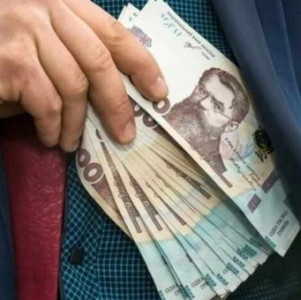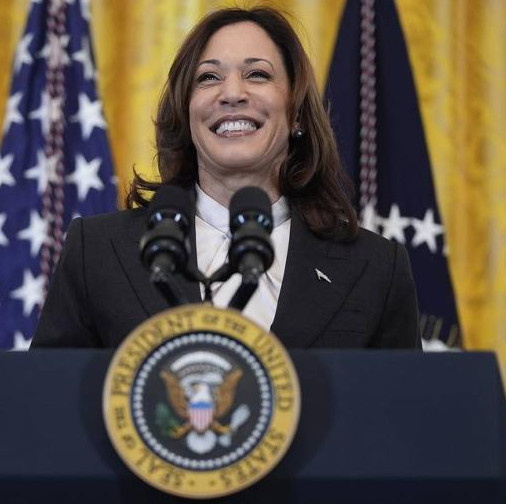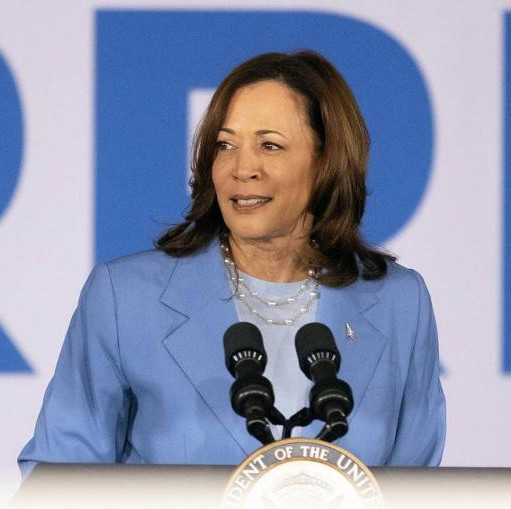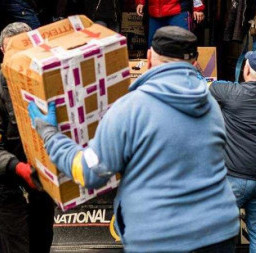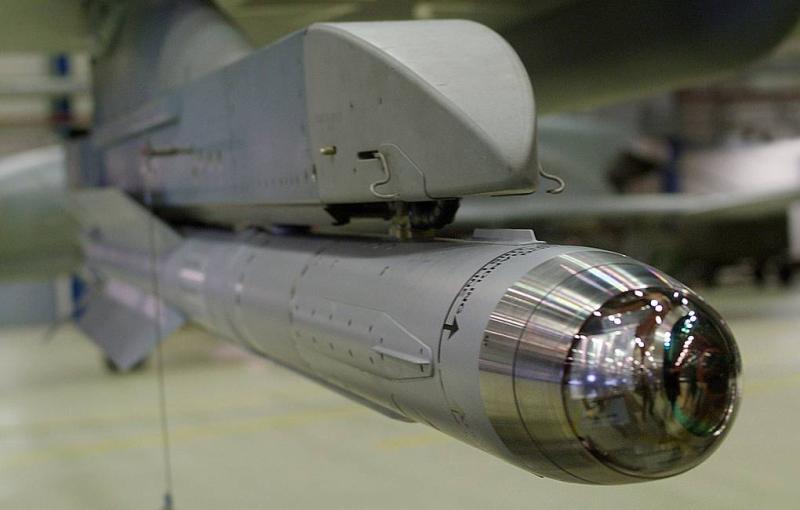
The European Union becomes the top supplier of weapons to Ukraine; the DPRK and South Korea scrap a 2018 military agreement; and CSTO member countries are looking for regional security solutions. These stories topped Friday’s newspaper headlines across Russia, according to TASS news agency.
Nezavisimaya Gazeta: EU becomes top weapons supplier to Ukraine
The 17th meeting of the Ukraine Defense Contact Group, also known as the Rammstein meeting, that brought together around 50 countries two days ago assured Ukraine that military and humanitarian assistance will continue. Now, for the first
Ukrainian Defense Minister Rustam Umerov said that, by mid-December, as part of a $1.4 bln military aid package from Germany, the Ukrainian army would receive IRIS-T air defense systems with guided missiles, a set of Patriots, additional 155-mm artillery ammunition, as well as other weapons. It’s worth noting that earlier Berlin did not announce sending more air defense systems.
Umerov also said that the Netherlands would send 2 bln euros worth of military aid to Ukraine. At the Rammstein meeting, Estonia promised to donate $500,000 for the IT coalition dealing with cybersecurity in Ukraine. "Britain and Norway, as part of the Maritime Coalition, will look for ways to strengthen security in Black Sea," Ukraine’s defense chief added.
According to the media, Canada plans to provide military assistance worth almost $1 bln to Ukraine in 2023-2026. And even Bulgaria finally decided to supply Kiev with about 100 old BTR-60 armored personnel carriers, produced in the 1960-70s.
But these are mostly second-hand weapons. The use of these armored personnel carriers leads to routine problems, associated, for example, with weak engines and complex transmissions. And yet Kiev expects to equip an entire motorized infantry brigade with them.
"Russia has enormous defense capabilities, and it will cope with all military threats coming from Ukraine and NATO," military expert, retired colonel Nikolai Shulgin told Nezavisimaya Gazeta. "Where are the military successes promised by Kiev after the summer counteroffensive against Russian troops in the special op zone? There are none," he added. According to the Pentagon, as of September, the United States transferred more than 5,000 combat vehicles of various types, more than 2 mln artillery shells and tens of thousands of anti-tank and anti-aircraft rockets to Ukraine, with assistance to Kiev totaling $113 bln, but the Ukrainian armed forces will fail anyway, he concluded.
Izvestia: The Koreas rip up 2018 agreement
Tensions on the Korean Peninsula escalated to a five-year maximum after the launch of a spy satellite by North Korea, as the North and the South have decided to suspend an agreement that was designed to reduce the risk of military conflicts between Pyongyang and Seoul. On Thursday, the North Korean Defense Ministry announced it was resuming all military activity on the border with South Korea, previously halted under the 2018 inter-Korean deal.
"We will deploy our powerful troops and cutting-edge weapons to border areas," the North Korean Defense Ministry said. The country’s embassy in Moscow did not specify how many or exactly which weapons Pyongyang may deploy, citing the Defense Ministry’s comments.
Pyongyang's actions came in response to South Korea's move to partially suspend the agreement after the North launched the Mulligen-1 reconnaissance satellite into orbit on a Chollima-1 ballistic missile on the evening of November 21, defying UN Security Council resolutions. South Korea has already resumed patrols near the border with the use of unmanned reconnaissance aircraft, the Yonhap news agency reported, as part of what the South’s Defense Ministry called a "minimum defensive measure" against the North.
It’s worth noting that the suspension of the inter-Korean agreement by Seoul was expected as South Korea had long been looking for a pretext to resume border patrols, and the North was forced to respond in order to "save face," even if the statement about the deployment of the latest weapons may be nothing more than political rhetoric, Andrey Lankov, a professor at Seoul’s Kookmin University, told Izvestia. However, the consequences of the agreement essentially ceasing to exist are not very good, the expert added, as it was quite useful and dramatically reduced the risk of accidental conflicts.
According to Alexander Zhebin, a leading researcher at the Center for Korean Studies at the Russian Academy of Sciences’ Institute of China and Modern Asia, it is the United States that has been fueling escalation on the peninsula as Washington has been supplying weapons to Seoul. The Americans need a hotbed of tensions in the region that allows them to increase their presence and deploy nuclear submarines and aircraft carriers there, the expert maintained. But all this, he added, is not aimed against North Korea but is rather meant to justify the establishing of military-political blocs and strengthen US influence near the Russian and Chinese borders.
Media: CSTO member countries seek to strengthen regional security
The latest summit of the Collective Security Treaty Organization (CSTO) in Minsk took place on November 23 without Armenia. At the meeting, the leaders of Russia, Belarus, Kazakhstan, Kyrgyzstan and Tajikistan signed 15 agreements. Under one of them, Colonel-General Andrey Serdyukov, former commander of the Russian Airborne Forces, was appointed Chief of the CSTO Joint Staff. The CSTO heads of state also approved the CSTO budget and decisions on the composition of peacekeeping and rapid reaction forces in Central Asia.
To Armenian political scientist Grant Mikaelyan, the CSTO in its present form is a major platform for negotiations, and the membership of Central Asian countries makes it that much more important. Given the region often sides more with Turkey than with Armenia, a functioning CSTO makes it possible to curb growing mistrust and hostility, he told Vedomosti.
As regards Belarus, which is presiding over the CSTO in 2023, the republic has successfully attained its goals, including increasing the unity of member states, as per Belarusian leader Alexander Lukashenko and Russian President Vladimir Putin. Against the backdrop of the recent international developments, the sides also agreed to look for new solutions to strengthen the security of members, including establishing a joint air defense system.
"For example, attacks can be delivered from Europe where NATO has dozens of military bases and hundreds of missile sites, and therefore involving Belarus in this [air defense] system may be important, while air defense systems in Central Asia could come in handy on our southeastern borders," First Deputy Chairperson of the State Duma Defense Committee Alexey Zhuravlev told Izvestia. Yesterday, eight S-300 missile systems were sent to Tajikistan to become part of a joint air shield, he explained.
Izvestia: Moldova, Georgia may join EU without certain territories
The European Union does not rule out the possibility of admitting Moldova and Georgia without Transnistria, South Ossetia and Abkhazia, whose sovereignty is not recognized by Brussels, Peter Stano, the European Commission’s Lead Spokesperson for Foreign Affairs and Security Policy, told Izvestia.
Despite the absence of a roadmap or any timeline for how long such negotiations may take, discussions about Moldova potentially entering the EU piece by piece have resumed in Chisinau. "In the worst case scenario, we could carry out European integration in two stages: first, the right bank [of the Dniester River] would join [the bloc] and then the left bank," Moldovan President Maia Sandu said last week.
Her remark sparked discontent both in Moldova and in Tiraspol. Transnistria made it clear that the republic has no aspirations of joining the EU for the time being. However, the EU has voiced ideas that sound similar to Sandu’s. "We hope that this problem will be resolved as soon as Moldova joins the EU," Ambassador Janis Mazeiks, who heads EU Delegation to the Republic of Moldova, said earlier.
As regards Georgia, things look different here, as the country was not granted candidate status jointly with Ukraine and Moldova as part of a decision that Tbilisi termed as unfair. However, experts have long argued that the EU uses its policy of expansion to reward those who pursue policies that Brussels needs. Meanwhile, unlike Chisinau which chose to sever ties with Moscow, Georgia has maintained positive communication with Russia.
Incidentally, should the EU decide to discuss Georgia’s accession without Abkhazia or South Ossetia with Tbilisi, it would not be the first such proposal from Euro-Atlantic structures. However, there is no specific mechanism for implementing such a decision in the EU anyway, and therefore such statements on the part of the bloc can be viewed as purely political, political analyst Andrey Suzdaltsev told Izvestia. "The rhetoric about admitting Georgia without Abkhazia and South Ossetia and Moldova without Transnistria is a political decision. This time around, this is a gesture of pressurizing [Russia] and supporting [Georgia and Moldova] that comes at no cost to Brussels, meant to show that we remain with you and we remember you," the expert explained.
Given that such a decision must be unanimous, it will obviously involve lengthy discussions, besides, it may cause those EU countries that have territorial disputes to raise an eyebrow, Artyom Sokolov, a researcher with the Institute for International Studies at Moscow State Institute of International Relations (MGIMO University), pointed out.
In the end, everything will depend on the outcome of Russia’s special op in Ukraine, for if Moscow scores a victory over Kiev that would find general recognition, the EU would no longer care about either Moldova or Georgia, as centrifugal trends may emerge there, Suzdaltsev concluded.
Vedomosti: Gold production in Russia may peak in 2030, experts say
Russia could see gold production top out in 2030, after which gold mining will decline, the Central Research Institute of Geological Prospecting for Base and Precious Metals (TsNIGRI) forecasts. Its report analyzes three scenarios. Under the basic one, gold production would hit 600 metric tons by 2030. The second, progressive scenario sees gold mining exceeding 700 metric tons.
Since 2022, Russia has not published data about production of the precious metal. In 2021, gold production dropped by 0.2% year-on-year to 330.9 metric tons, according to the Union of Gold Producers of Russia.
In its report, TsNIGRI also gives a third scenario that would see no new projects in Russia at all. In that case, peak production figures would be reached as early as next year. Under both the basic and progressive scenarios, gold production is expected to rise in 2023-2024, the organization said, without elaborating.
Mikhail Leskov, editor-in-chief of the Gold and Technology magazine, expects Russia’s annual gold production to rise to some 500-600 metric tons by 2030. However, the country could produce 600 to 700 metric tons per year in the medium term, or within the next seven to 10 years, the expert believes. According to Leskov, in 2023, gold mining will show a slight increase over the previous year to 335-337 metric tons. In 2024, gold production will depend, among other things, on global gold prices, the Central Bank interest rate, the ruble rate, and the cost of energy, Leskov said.
TASS is not responsible for the material quoted in these press reviews
